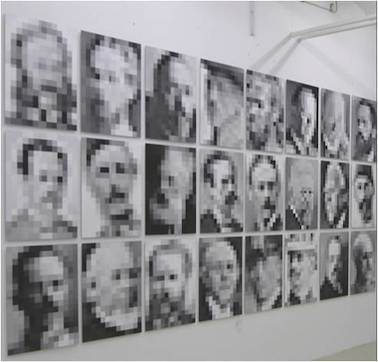THE ROT REMAINS WITH US, THE MEN ARE GONE
THOMAS ELLER:
49 PORTRAITS
Exhibition 15.09.–28.09.2014 Thu–Sun 16:00–20:00
The men who were at the forefront of the German colonial and imperial endeavour are long gone, and the memory of German colonial rule, too, seems to have been obliterated from discourses in the public sphere and buried six feet under. Derek Walcott suggests that while the men are gone, the rot still remains with us. Once the culprits and their faces no longer exist, where do we look for the rot that the imperial formations have produced? How can we render the aftermath visible? And where do we turn to look for the rot?

The exhibition The Rot Remains with Us, the Men Are Gone rests on the premise that German imperialism is not only tremendously neglected and denied in public and mainstream historical discourse, but also continues to produce and is reproduced in social and cultural contexts. While shedding light on the toxic but subtle corrosions and violent accruals of colonial aftermaths it aims to investigate the rot, the remnants and remains of German imperial rule in order to trace and question the way colonial formations continue to penetrate our lives today.
The central piece of this exhibition, 49 portraits (2013), consists of a selection of highly pixelated portraits of men who played an active or indirect role in the course of German colonial rule, which reveal their content only at a certain distance, compelling the viewer to question his/her position towards them. Through critically addressing the 48 portraits presented by Gerhard Richter in the German pavilion of the 1972 Venice Biennale, the piece engages with the history of the portrayal of the “good” white male and ties it into a longer history of imperial rule and notions of cultural supremacy. The work will be shown alongside his pieces Die Mauer grau streichen (1986), THE Selbst – Greetings in Riga (1991) and THE White Male Complex #5 (lost).
The exhibition forms part of Thomas Eller’s long durée commitment to deconstructing the cultural, political, societal and artistic positions of male Western legacy.
